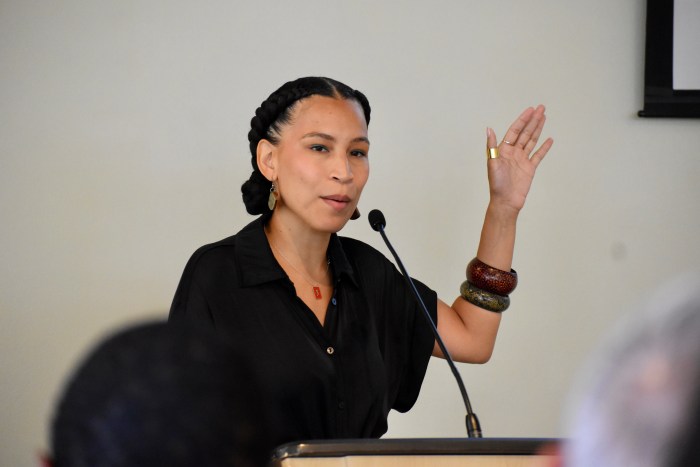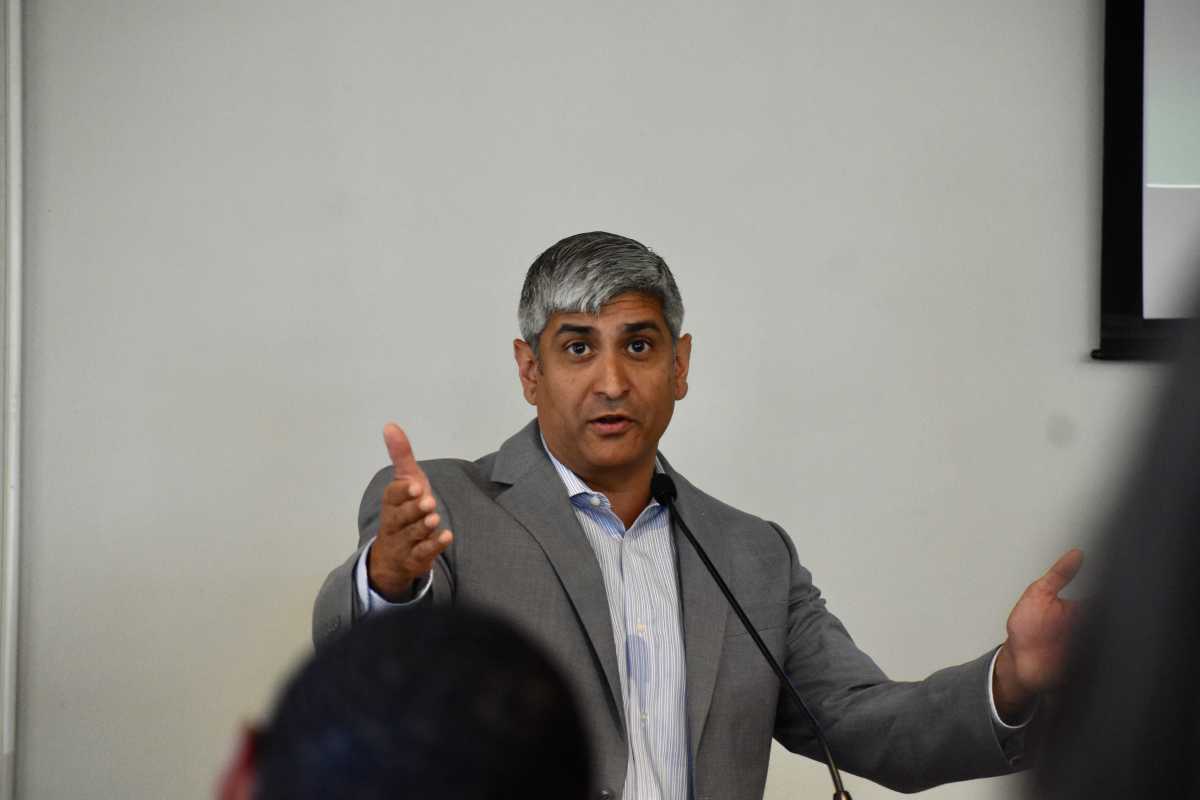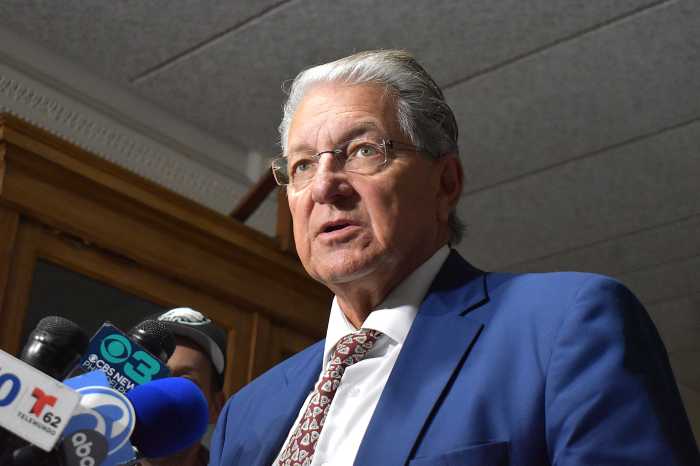Nonprofit leaders and other stakeholders gathered Monday morning in the shadow of Independence Hall to discuss the latest data about immigration trends in Philadelphia.
As the event began, Anuj Gupta, president and CEO of the Welcoming Center, which helps promote economic opportunity for foreign-born residents, noted that a Gallup survey in April found that – for the third month in a row – Americans believed immigration is the biggest problem facing the country.
“This issue may very well decide the next occupant of the White House,” he told a crowd assembled on the second-floor of the Independence Visitors Center. “There’s a lot being said, a lot being written, a lot being told about immigration in this nation. Most of it is misinformation. Most of it is conjecture.”
Immigration allowed Philadelphia to see a minor uptick in residents in recent years, reversing a decades-long downward trend, data shows. Between 2000 and 2022, the city’s immigrant population increased by 109,400 and the number of U.S.-born residents dropped by nearly 60,000, according to a new report from the Pew Charitable Trusts.
Pew found that more than 246,000 Philadelphians – or 15.7% of the city – were born outside of the country. That is above the national average (13.9%) but significantly lower than New York (36.8%), Boston (27.6%) and Seattle (20.3%).
Rising immigration has changed the racial makeup of the city, which, up until 2000, was a combined 85% Black and white, the research indicates. The total fell to 72% in 2022, the most recent year for which data is available. In the meantime, the number of Asian residents has tripled, while the Latino population has doubled, according to Pew.
One in five foreign-born city residents is from China or the Dominican Republic – by far the two largest countries of origin. Out of the top 10, only one – Ukraine – was outside Asia or Latin America.

While immigrants have settled across the city, the highest concentration and diversity is in Northeast Philadelphia, which includes multiple census tracts, in Castor Gardens, Mayfair, Bustleton and Somerton, where more than 40% of residents are foreign-born, according to the report.
Following a PEW presentation, several nonprofit leaders engaged in a panel discussion focused on how to better support immigrants.
“If we don’t invest in immigrant talent, we won’t be the city everybody wants us to be,” said Patrick Clancy, president and CEO of Philadelphia Works, a workforce development agency.
“We have to find money to invest more in ESL (English as a Second Language) and other services,” he added. “We don’t have enough money right now, and we can’t keep looking the other way, as if people are going to learn English on their own.”
Using census data, Pew found that nearly 70% of Guatemalans and 60% of Brazilians in Philadelphia reported not being able to speak English well or at all.
Emilio Buitrago’s organization, Casa de Venezuela Philadelphia, was one of a dozen groups who assisted migrants shipped to the city on buses by Texas Gov. Greg Abbott.
“One of the things that I learned from the people that were coming to our welcome center is that they were not looking for freebies,” he said. “They were not looking to stay at the welcome center and just live off the wellness of the people helping them. They were looking for jobs.”
Voffee Jabateh, whose African Cultural Alliance of North America is forming an Africatown neighborhood in Southwest Philadelphia, said leaders from different communities need to come together to present an agenda to city and state leaders.
“To say this is what we’ve done, and this is what we are asking you to do,” Jabateh added.
Representatives from Pew said the report is the first in a series about immigration in Philadelphia. Future editions will examine the economic and fiscal impacts of immigration; housing and household compositions; legal statuses; and immigration at a regional level.




























